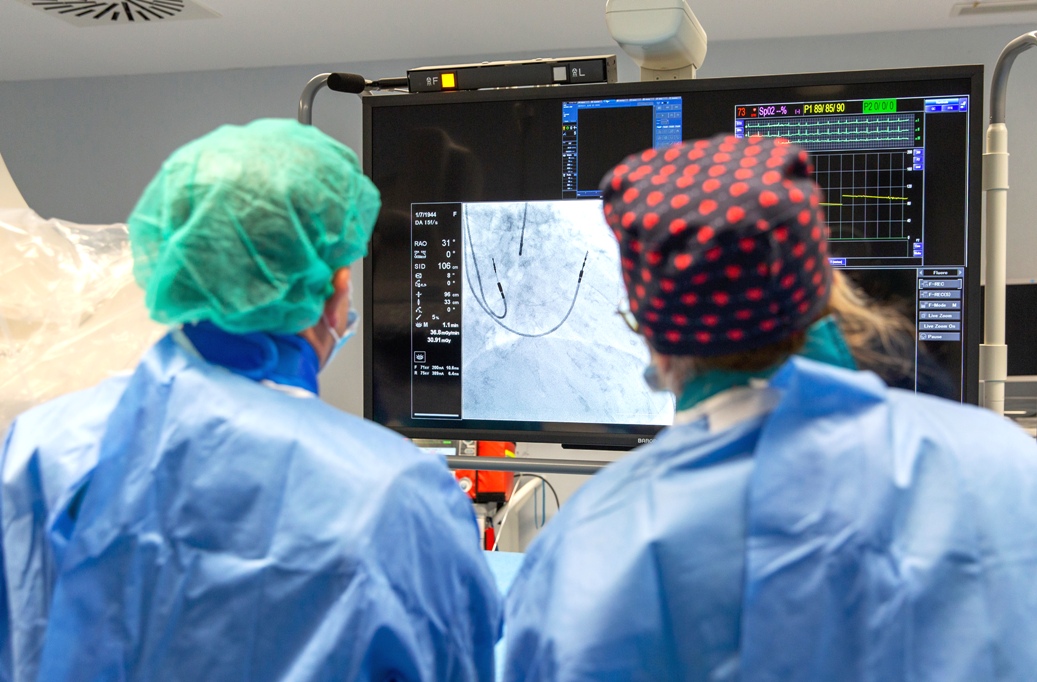
What is coarctation of the aorta? — Treatment for coarctation of the aorta in Marbella
01/09/2022Coarctation of the aorta frequently coexists with other congenital heart defects. Treatment is frequently effective, but the condition necessitates meticulous lifelong monitoring. Here is all you need to know about our treatment for coarctation of the aorta in Marbella.
What is coarctation of the aorta?
The aorta is the most significant vessel in the human body. It transports oxygen-rich blood from the heart to the body. Coarctation of the aorta refers to a narrowing of the aorta. In order to get blood to move through the aorta, it compels the heart to pump more forcefully.
In most cases, coarctation of the aorta is present at birth (a condition known as congenital heart defect). There is a spectrum of severity associated with the symptoms. It's possible that the condition won't show any symptoms until adulthood.
Treatment for coarctation of the aorta in Marbella
Our treatment for coarctation of the aorta in Marbella is contingent upon the patient's age at the time of diagnosis as well as the degree to which the condition has progressed. It is possible that other congenital heart defects could be repaired at the same time if this procedure is performed.
The treatment may consist of medical procedures or surgery to repair the aorta, as well as medications to control the symptoms.
Care providers who have received training in congenital heart disease also contribute to the process of determining the most effective treatment for coarctation of the aorta. These doctors are referred to as cardiologists and are trained to diagnose and treat conditions affecting the heart and blood vessels.
Medication
Before and, in some cases, after the repair surgery, blood pressure can be controlled with medication that the doctor prescribes. Even though repairing an aortic coarctation improves blood pressure, many people still need to take blood pressure medication after a successful surgery or procedure. This is because the aortic coarctation was not properly repaired in the first place.
Babies who have severe coarctation of the aorta are frequently given a medication that keeps the ductus arteriosus open. This is done so that blood can flow normally through the body. Because of this, blood is able to flow around the constricted section of the aorta until surgery can be performed.
Surgery or other procedures
Repairing aortic coarctation can be done through a number of different procedures and surgeries. You and the rest of your medical team can have a conversation about which approach has the best chance of being successful. Among the choices for our treatment for coarctation of the aorta in Marbella are:
- Angioplasty with a balloon and stent placement. Possible first treatment for aortic coarctation. After surgery for coarctation, this procedure is occasionally performed if the artery begins to narrow once more. A catheter, which is a thin, flexible tube, is inserted into an artery in the groyne prior to the procedure. With the help of X-rays, it is navigated through the various blood vessels on its way to the heart. The device is then manoeuvred into the region of the constricted aorta after an uninflated balloon has been inserted into the catheter and placed within it. The aorta is widened when the balloon is inflated, which facilitates easier blood flow. Angioplasty is frequently performed in conjunction with the implantation of a stent, which is a small tube made of wire mesh. The stent helps to keep the artery open, reducing the risk of it becoming more constricted in the future.
- Resection with end-to-end anastomosis. In this procedure, the constricted section of the aorta is cut away (a procedure known as resection), and then the remaining two sections of the aorta are joined together (a procedure known as anastomosis).
- Subclavian flap aortoplasty. A portion of the blood vessel that supplies blood to the left arm (the left subclavian artery) is utilised in order to expand the area of the aorta that has become constricted.
- Bypass graft repair. During this procedure, a tube known as a graft is utilised to reroute blood around the section of the aorta that is constricted.
- Patch aortoplasty. After making an incision across the constricted portion of the aorta, the surgeon will proceed to attach a patch made of synthetic material in order to enlarge the blood vessel. When the coarctation affects a significant portion of the aorta's length, patch aortoplasty is an effective treatment option.
Regular checkups are necessary for the rest of one's life following aortic repair surgery in order to measure blood pressure and check for complications.